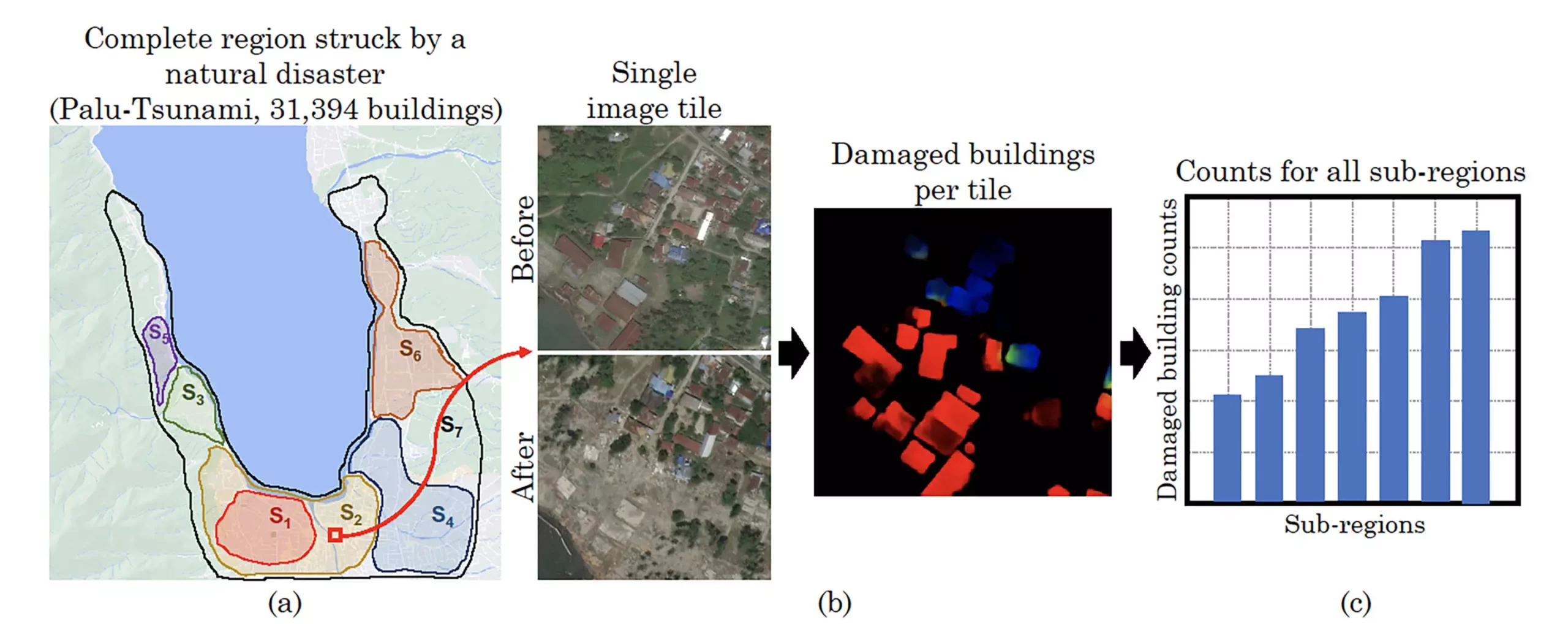In a groundbreaking development, a team of computer scientists at the University of Massachusetts Amherst has introduced a revolutionary AI framework known as DISCount. This framework aims to tackle the challenges of detecting damaged buildings in crisis zones and accurately estimating the size of bird flocks, utilizing the speed and data-crunching power of artificial intelligence combined with human analysis. The research, recently published in Proceedings of the AAAI Conference on Artificial Intelligence, has been lauded for its significant social impact and innovative approach.
The genesis of DISCount was born from two seemingly disparate problems – the need to identify damaged buildings in crisis zones for organizations like the Red Cross, and the desire to accurately estimate the size of bird flocks for ornithologists. Lead author Subhransu Maji, alongside Gustavo Pérez and Dan Sheldon, identified a common challenge in both domains – the limitations of existing computer vision models in providing accurate and reliable results. The standard approaches were falling short of expectations, prompting the team to explore a new methodology.
The team’s breakthrough came from redefining traditional approaches to counting problems. Instead of relying solely on either human hand-counts or automated computer vision models, they proposed a hybrid solution that leveraged the strengths of both. DISCount is designed to complement existing AI computer vision models by narrowing down the vast amount of data to a smaller subset for human analysis. By combining the precision of human judgment with the speed of AI, researchers can obtain more reliable estimates in a fraction of the time previously required.
DISCount operates by utilizing AI to sift through extensive image archives and identify key data points for human researchers to analyze. For instance, in the context of detecting damaged buildings, the AI might pinpoint specific images that best illustrate the extent of destruction in a given area. Human researchers can then conduct a detailed count of the affected buildings within this subset, allowing the algorithm to extrapolate the total damage across the entire region. Moreover, DISCount provides researchers with a confidence interval, enabling them to make informed judgments about the accuracy of their estimates.
Implications and Future Prospects
The significance of DISCount lies in its versatility and applicability across various domains. By offering a customizable framework that can adapt to different computer vision models, researchers have the freedom to choose the most suitable AI approach for their specific needs. This not only enhances the accuracy and reliability of the analysis but also streamlines the overall research process. As lead author Gustavo Pérez aptly summarizes, “DISCount works significantly better than random sampling for the tasks we considered,” underscoring the framework’s efficacy and potential for widespread adoption.
The development of DISCount represents a major leap forward in the field of artificial intelligence and data analysis. By bridging the gap between human expertise and machine learning capabilities, this innovative framework has the power to revolutionize how complex problems are approached and solved. As the team at UMass Amherst continues to refine and expand the application of DISCount, the future of AI-driven research looks brighter than ever.


Leave a Reply